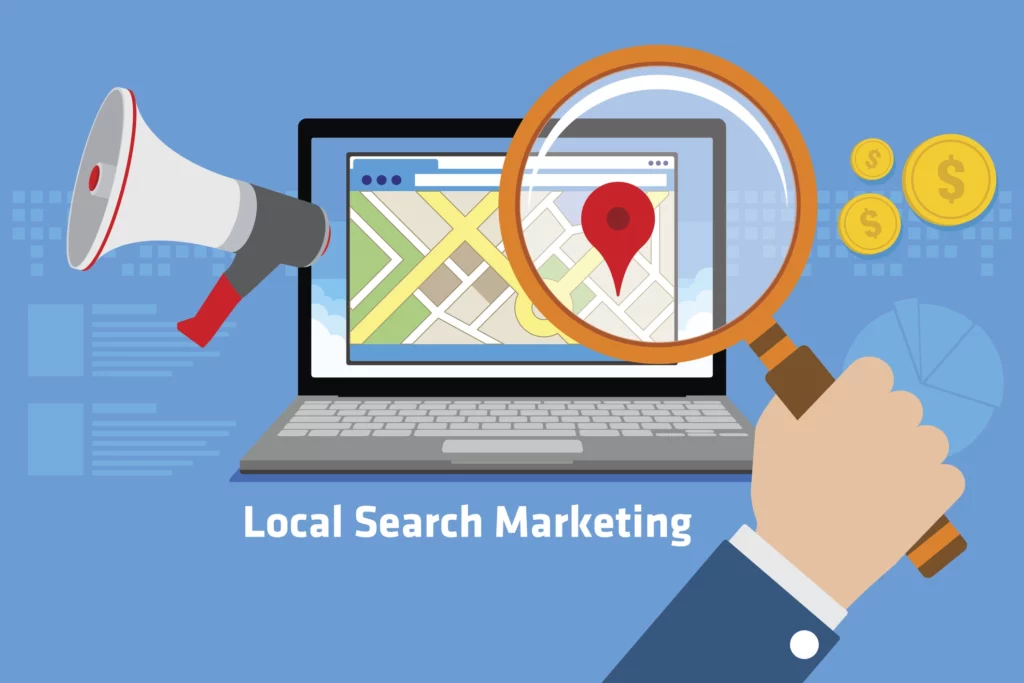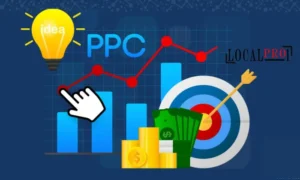Local SEO Services Near Me | Local Pro1 Welcome to...
Unlocking the Power of Geofencing in Google Ads
Unlocking the Power of Geofencing Google Ads
Geofencing in Google Ads is a powerful and precise location-based advertising strategy that allows businesses to target their ads to specific geographic areas or regions. It involves the creation of virtual boundaries or “fences” around predefined geographic locations, such as cities, neighborhoods, stores, or even specific GPS coordinates. These virtual boundaries are established using a combination of GPS, RFID, Wi-Fi, or cellular data, and they enable advertisers to deliver highly targeted ads to users when they enter or exit these designated areas. LocalPro1 will provide you the best service and the guidance related to the Geofencing google ads.

What is Geofencing Google Ads?
Geofencing in Google Ads refers to the practice of targeting specific geographic areas or locations with your advertising campaigns. It involves setting up virtual boundaries, or “geofences,” around particular regions or places, and then delivering ads to users who are within or have recently been in those defined areas. Geofencing allows advertisers to precisely target their audience based on their physical location, and it can be a valuable tool for businesses looking to reach potential customers in specific locations.
Explanation of Geofencing in the context of Google Ads: Geofencing in Google Ads is an advertising strategy that uses location-based targeting to display ads to users within predefined geographic areas. These areas can be as broad as entire cities or as specific as individual buildings or landmarks. Advertisers can customize their ad campaigns to appear to users who are within, entering, or exiting these specified locations.
How Geofencing Works in Google Ads
Define Geographic Boundaries: Advertisers start by setting up geofences, which are virtual perimeters around specific locations or areas. This can be done using Google Ads’ location targeting tools.
Ad Campaign Setup: Once the geofences are established, advertisers create and configure their advertising campaigns within Google Ads. They can choose to target users within these geographic areas or adjust their ad bids and messaging accordingly.
Targeting Options: Advertisers have various targeting options with geofencing, such as targeting by city, zip code, radius around a location, or even custom-drawn boundaries on a map.
Ad Delivery: When users enter the defined geofenced areas or meet the specified criteria, they become eligible to see the ads associated with that location-based campaign.
Ad Performance Monitoring: Advertisers can track the performance of their geofenced campaigns, including click-through rates, conversions, and other relevant metrics, to assess the effectiveness of their targeting.
Benefits of Using Geofencing in Google Ads
Precise Targeting: Geofencing allows advertisers to target specific locations, ensuring that their ads are shown to users who are most likely to be interested in their products or services.
Localized Advertising: Businesses can tailor their messaging to local audiences, promoting special offers, events, or products relevant to a particular area.
Increased Relevance: Ads displayed within or near a user’s physical location are often more relevant, increasing the likelihood of engagement and conversions.
Cost Efficiency: Geofencing can help optimize ad spend by focusing resources on areas with a higher potential for customer acquisition.
Competitive Advantage: Businesses can gain a competitive edge by strategically targeting locations where their competitors are less active or absent.
Geofencing Marketing in Google Ads
Exploring the Intersection of Geofencing and Marketing in Google Ads
This topic could cover the fundamental concept of geofencing and its relevance to digital marketing within Google Ads. It would explain how businesses can leverage geofencing technology to target specific geographic areas for their advertising campaigns. This may include discussing the benefits, challenges, and potential strategies associated with geofencing in Google Ads.
Targeting Specific Locations with Geofencing
This topic would delve deeper into the technical aspects of setting up and managing geofencing campaigns within Google Ads. It would include instructions on how to create location-based targeting in Google Ads, how to define custom geofences, and how to optimize bids and create content for specific locations. Additionally, it could provide tips for maximizing the effectiveness of geofencing marketing.
Case Studies of Successful Geofencing Marketing Campaigns
This topic would showcase real-world examples of businesses that have achieved success through geofencing marketing campaigns within Google Ads. It could include a range of case studies from various industries, highlighting the objectives, strategies, and outcomes of these campaigns. This would offer practical insights and inspiration for businesses looking to implement geofencing in their marketing efforts.
Factors Influencing the Cost of Geofencing in Google Ads
Geographic Area: The size and location of your geofence play a significant role in cost. Larger areas and areas with higher population densities generally cost more to target.
Ad Platform: Different ad platforms may have varying pricing structures for geofencing campaigns. Google Ads, for instance, offers various bidding options, including cost-per-click (CPC) and cost-per-thousand-impressions (CPM), which can affect your overall costs.
Ad Spend: Your daily or monthly budget will directly impact the cost of your geofencing campaign. A higher budget allows you to reach more people within your selected geofence.
Targeting Precision: The precision of your geofencing can also impact costs. Highly precise geofences may require more resources to create and maintain, thus increasing your expenses.
Ad Creatives: The quality and complexity of your ad creatives, including video, graphics, and copy, can impact your ad campaign costs. More sophisticated creatives may require a higher budget.
Competition: In highly competitive markets or areas with numerous advertisers targeting the same audience, the cost of geofencing ads may rise due to increased bidding competition.
Budget Considerations for Geofencing Campaigns
Set a Realistic Budget: Determine how much you’re willing to spend on your geofencing campaign. Consider your overall advertising budget and allocate a portion to geofencing based on your goals.
Test and Optimize: Start with a smaller budget to test the effectiveness of your geofencing strategy. As you gather data and see results, adjust your budget accordingly to optimize performance.
Cost-Per-Action (CPA) Goals: Define your desired cost-per-action (e.g., cost per click, cost per conversion) and use it to guide your budget decisions. Ensure that your budget aligns with your CPA goals.
Monitor and Adjust: Continuously monitor your campaign’s performance and make adjustments as needed. If your budget isn’t delivering the desired results, consider reallocating funds or optimizing your targeting.
Tips for Cost-Effective Geofencing in Google Ads
Geotargeting Precision: Optimize your geotargeting to focus on areas where your target audience is most likely to be. This reduces wasted ad spend on irrelevant locations.
Dayparting: Consider scheduling your ads to run during peak times when your audience is more likely to be within the geofenced area. This can help maximize the impact of your budget.
Use Negative Keywords: Implement negative keywords to exclude irrelevant searches and locations, further refining your targeting and reducing costs.
Ad Relevance: Ensure your ad creatives are highly relevant to your target audience and location. Relevant ads are more likely to generate clicks and conversions.
A/B Testing: Conduct A/B tests to identify which ad variations and geofencing strategies perform best. This allows you to allocate budget to the most effective campaigns.
Bid Management: Adjust your bidding strategy based on performance data. Allocate more budget to high-performing areas and decrease spending in underperforming regions.
Our Services
Our Latest Posts
PPC White Label Services by Local Pro1 | Expert Solutions
PPC White Label Services by Local Pro1 | Expert Solutions...
Contact us
Does Geofencing Marketing Work?
Measuring the Effectiveness of Geofencing in Google Ads: Measuring the effectiveness of geofencing marketing in Google Ads, or any advertising platform, is crucial to understanding its impact on your business. Here are some ways to measure its effectiveness:
Click-Through Rate (CTR): Monitor the CTR of your geofencing ads. A high CTR indicates that your ads are resonating with your target audience within the geofenced area.
Conversion Rate: Measure the conversion rate to see how many users who clicked on your geofencing ads took the desired action, such as making a purchase or filling out a contact form.
Return on Ad Spend (ROAS): Calculate the ROAS to determine whether your geofencing campaigns are generating a positive return on your advertising investment.
Foot Traffic Attribution: If you have physical locations, use foot traffic attribution tools to track whether your geofencing ads are driving people to visit your stores or locations.
Sales and Revenue Metrics: Analyze the impact of geofencing on your sales and revenue. This could involve tracking sales generated from users within the geofenced area or comparing sales before and after implementing geofencing.
Geotargeting Metrics: Assess how well your geofencing campaigns are targeting specific geographic areas. Are you reaching the right locations and demographics within those areas?
Ad Engagement: Look at engagement metrics like the number of impressions, ad views, and engagement actions (likes, shares, comments) to gauge how well your ads are performing.
- Success Metrics and Key Performance Indicators (KPIs): To determine the overall success of your geofencing marketing efforts, consider defining specific KPIs and success metrics. These metrics should align with your marketing objectives and business goals.
Common KPIs for geofencing marketing may include
Conversion Rate: The percentage of users who take a desired action (e.g., making a purchase, signing up for a newsletter) after being exposed to your geofencing ads.
ROI or ROAS: The return on investment or return on ad spend, indicating how effectively your geofencing campaigns are generating revenue relative to your advertising costs.
Foot Traffic Increase: If you have physical locations, measure the increase in foot traffic or store visits within the geofenced areas as a result of your campaigns.
Sales and Revenue Growth: Track the impact of geofencing on your overall sales and revenue figures.
Click-Through Rate (CTR): Evaluate the engagement level of your ads within the geofenced area.
Customer Acquisition Cost (CAC): Calculate the cost of acquiring a new customer through your geofencing campaigns.
Brand Awareness Metrics: If brand awareness is a primary goal, measure metrics like ad impressions, reach, and social media engagement.
Customer Lifetime Value (CLV): Assess the long-term value of customers acquired through geofencing to understand their impact on your business.
Churn Rate: If applicable, monitor the rate at which customers within the geofenced area stop engaging with your brand or become inactive.
Competitive Benchmarking: Compare your geofencing performance metrics with competitors to gauge your market position.
Conclusion
Geofencing in Google Ads offers a multitude of advantages for businesses seeking to enhance their digital advertising strategies. It enables precise targeting, allowing advertisers to reach their desired audience with pinpoint accuracy. This means ads can be tailored to specific geographic locations, ensuring that marketing efforts are focused on areas where they are most likely to yield results. Feel free to contact us for any type of query or the services related to geofencing google ads.
FAQs
What Is Geofencing In Google Ads?
Geofencing in Google Ads is a location-based advertising strategy that allows advertisers to target specific geographic areas or boundaries with their ads. It ensures that ads are shown to users within a predefined virtual perimeter.
How Does Geofencing Work In Google Ads?
Geofencing in Google Ads works by setting up a geographic area, such as a radius around a physical location or a custom-drawn boundary on a map. Ads are then displayed to users who enter or are within that defined area, either through GPS on mobile devices or IP addresses on desktops.
Can I Target Multiple Geofences In A Single Google Ads Campaign?
Yes, you can target multiple geofences within a single Google Ads campaign. This allows you to customize your ad targeting for different locations or regions.
Can I Exclude Certain Areas From Geofencing In Google Ads?
Yes, you can exclude specific areas or regions from your geofencing in Google Ads. This is useful if you want to target one area but avoid showing your ads in another.
What Types Of Businesses Benefit Most From Geofencing In Google Ads?
Geofencing is particularly beneficial for local businesses, such as retail stores, restaurants, healthcare providers, and service-based businesses that want to reach a specific local audience.



